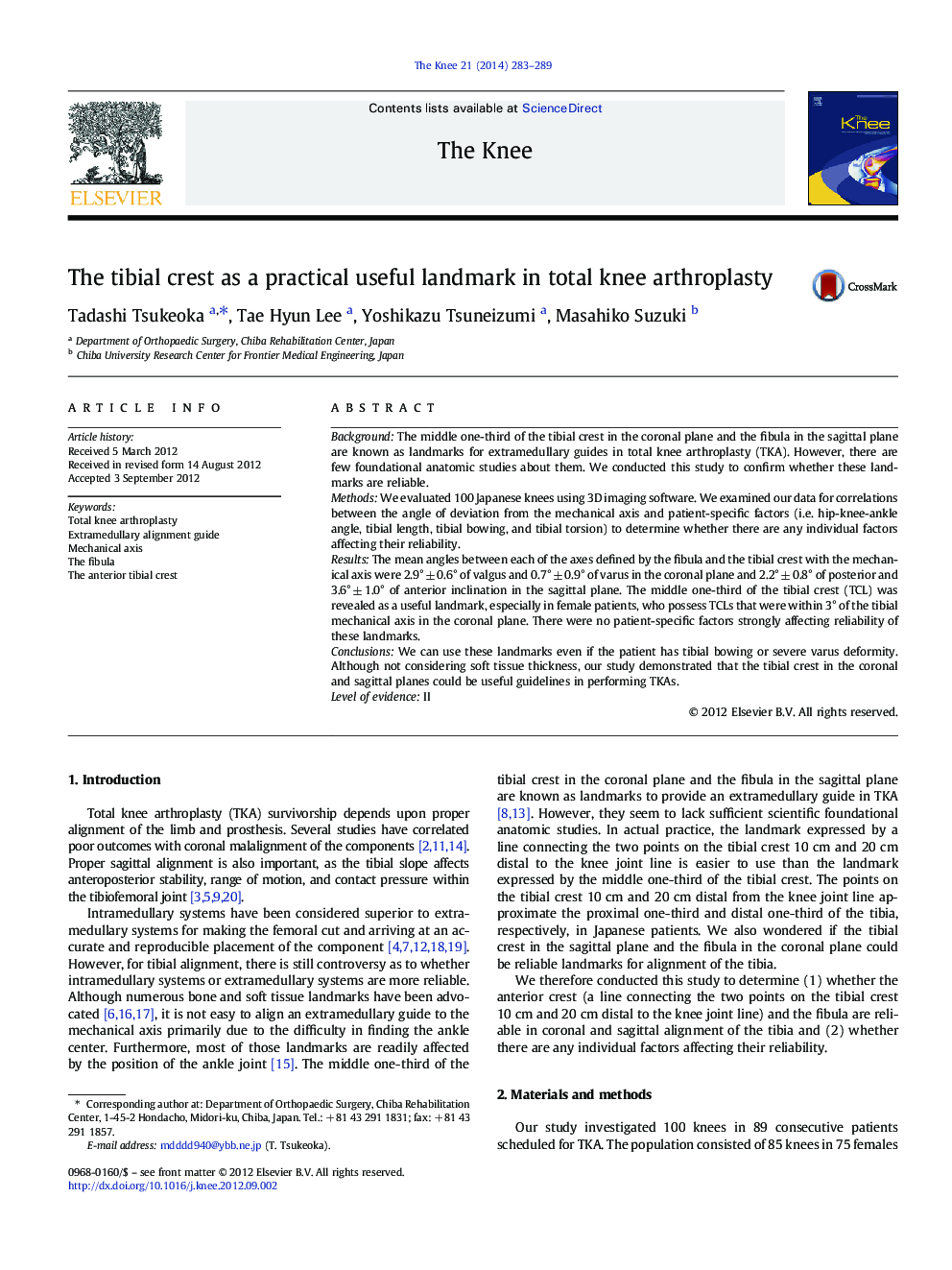| Article ID | Journal | Published Year | Pages | File Type |
|---|---|---|---|---|
| 6211274 | The Knee | 2014 | 7 Pages |
BackgroundThe middle one-third of the tibial crest in the coronal plane and the fibula in the sagittal plane are known as landmarks for extramedullary guides in total knee arthroplasty (TKA). However, there are few foundational anatomic studies about them. We conducted this study to confirm whether these landmarks are reliable.MethodsWe evaluated 100 Japanese knees using 3D imaging software. We examined our data for correlations between the angle of deviation from the mechanical axis and patient-specific factors (i.e. hip-knee-ankle angle, tibial length, tibial bowing, and tibial torsion) to determine whether there are any individual factors affecting their reliability.ResultsThe mean angles between each of the axes defined by the fibula and the tibial crest with the mechanical axis were 2.9° ± 0.6° of valgus and 0.7° ± 0.9° of varus in the coronal plane and 2.2° ± 0.8° of posterior and 3.6° ± 1.0° of anterior inclination in the sagittal plane. The middle one-third of the tibial crest (TCL) was revealed as a useful landmark, especially in female patients, who possess TCLs that were within 3° of the tibial mechanical axis in the coronal plane. There were no patient-specific factors strongly affecting reliability of these landmarks.ConclusionsWe can use these landmarks even if the patient has tibial bowing or severe varus deformity. Although not considering soft tissue thickness, our study demonstrated that the tibial crest in the coronal and sagittal planes could be useful guidelines in performing TKAs.Level of evidenceII
